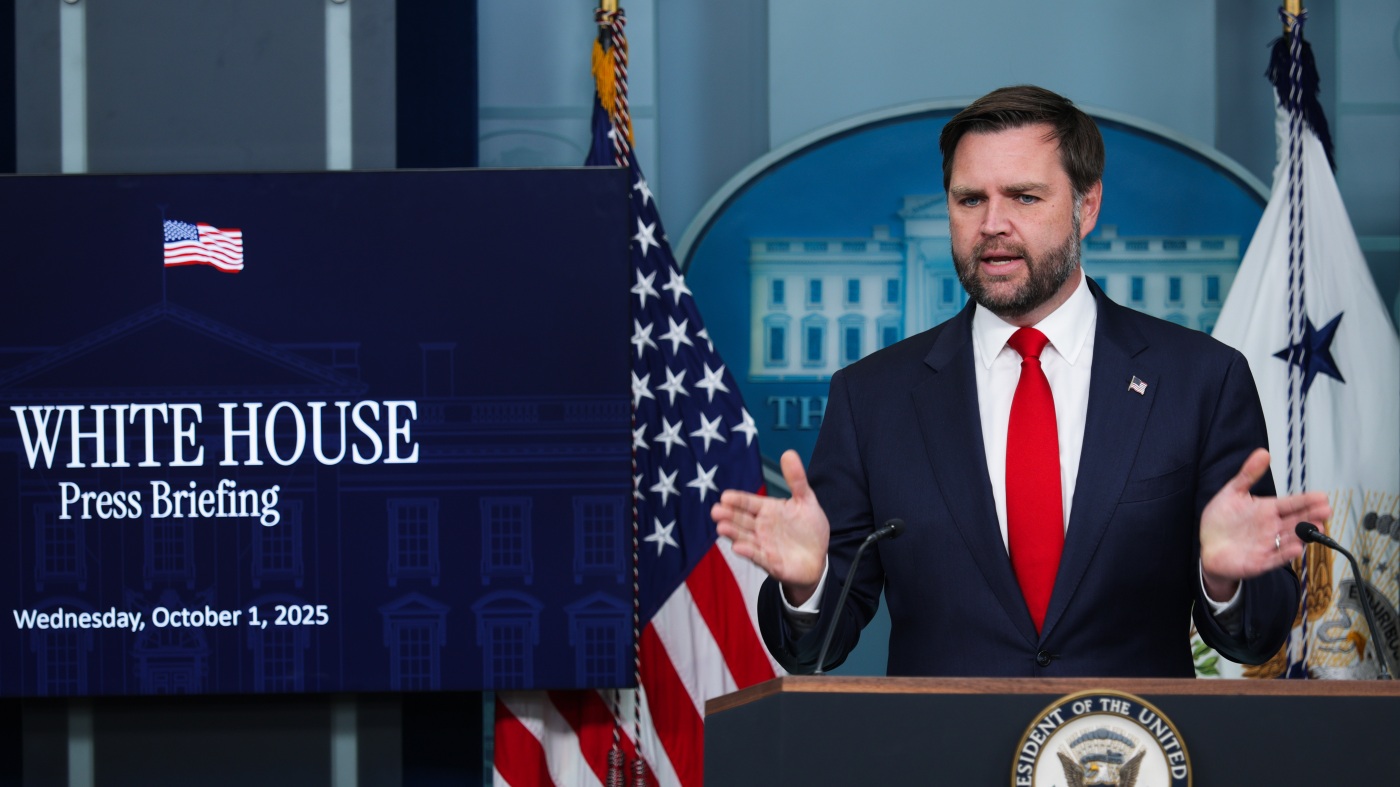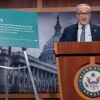Vice President JD Vance speaks at the White House press briefing on the day the government shutdown. Vance is among the Republicans arguing there’s plenty of time to extend ACA tax credits.
Alex Wong/Getty Images
hide caption
toggle caption
Alex Wong/Getty Images
On Capitol Hill right now, there’s a partisan argument over if and when lawmakers need to act to extend subsidies for the Affordable Care Act marketplaces. That’s where 24 million people — who don’t have insurance through their jobs or a public program like Medicaid — buy health plans.
The argument is at the heart of the government shutdown that started Oct. 1.
Democratic lawmakers say extending enhanced premium tax credits is urgent, with open enrollment weeks away. Republican lawmakers say there’s time to negotiate over a policy later, since the subsidies expire in December.
Who’s right?
“The window is rapidly closing,” says Jon Godfread, North Dakota’s insurance commissioner. He says the enhanced subsidies need to be extended before open enrollment starts Nov. 1. “Let’s do this now.”
If lawmakers miss that deadline, he says, “it’s going to be really, really challenging to go back [to consumers] and say, ‘OK, now we fixed it, please come back and shop at this market that you were priced out of.’ I just don’t believe consumers are going to do that.”
Insurance honchos in Red and Blue states all want it done
Godfread insists this issue is not about partisan politics. He himself is an elected Republican, and he is also president of the National Association of Insurance Commissioners, a membership organization of state insurance regulators across the country. “Red state, blue state, appointed, elected — we have unanimous approval supporting these tax credits,” he says.
The insurance commissioners have been warning lawmakers about this impending problem for months. “Since January, to be honest — we’ve sent four different letters,” he says. He also spent the whole month of May in Washington D.C. meeting with members of Congress and explaining how an expiration of the enhanced premium tax credits will hit consumers very hard — he calls it a “double hit.”
From $800 to $3,000 a month in premiums
“We’re seeing increases in premiums because health care costs are going up, but when you also take away these subsidies, you essentially pull the rug out from people,” he says. “You’re looking at a family that maybe was paying $800 a month for their health insurance and that jumps to $3,000.”
Premiums on average would go up 114% for consumers, according to an analysis published this week by KFF, the nonpartisan health research organization.
In North Dakota, the people who will be affected are mostly farmers and ranchers, Godfread explains. “With these enhancements, we saw more farmers and ranchers purchasing coverage for their families, so it’s been really, really good on that front,” he says.
According to KFF, more than 3 in 4 enrollees in these ACA plans live in states President Trump won in 2024. KFF also published a poll Friday that found that 78% of voters across the political spectrum are in favor of continuing the enhanced subsidies, including most Republicans and “Make American Great Again” supporters.
Time for ‘action’
After a bumpy first decade, right now, the ACA insurance markets like Healthcare.gov are working pretty well, Godfread says. Consumers are happy with their options and find the plans affordable. If premiums spike for consumers and the healthiest people drop their coverage, “that really sickens and weakens the risk pool,” he says. Plus, more uninsured people mean more uncompensated care for hospitals, which presents its own problems for state budgets.
When he talks with lawmakers, Godfread says, sometimes they balk at the cost of the subsidies and at how expensive premiums have become. “That discussion is separate,” he argues. “We can talk about the costs of health care and pharmaceuticals, all the pieces — but we’ve still got to get access to consumers, and that’s what these subsidies have helped provide.”
He is hopeful lawmakers might act since, at last, there’s more attention and awareness about the policy issue. “I’m happy we’ve had more conversations — we’ve got to get some action, though,” he says.
States stand ready to respond
With open enrollment just a few weeks away — Nov. 1 everywhere except Idaho where it’s Oct. 15 — health insurers have locked in their rates for 2026. But Godfread explains there’s still an opportunity to give consumers the subsidized rates if Congress acts quickly.
“Most states, if not all states, had their [insurance] carriers file two sets of rates — one with subsidies, one without,” he says. “And so if they do a clean extension of these subsidies, I think most states will be ready to go on that.”
The key, again, is getting it done before open enrollment begins, he says, so that consumers see a rate they can afford when they log in to shop for a plan. “I don’t see consumers taking multiple bites of this apple.”
This story originally appeared on NPR



